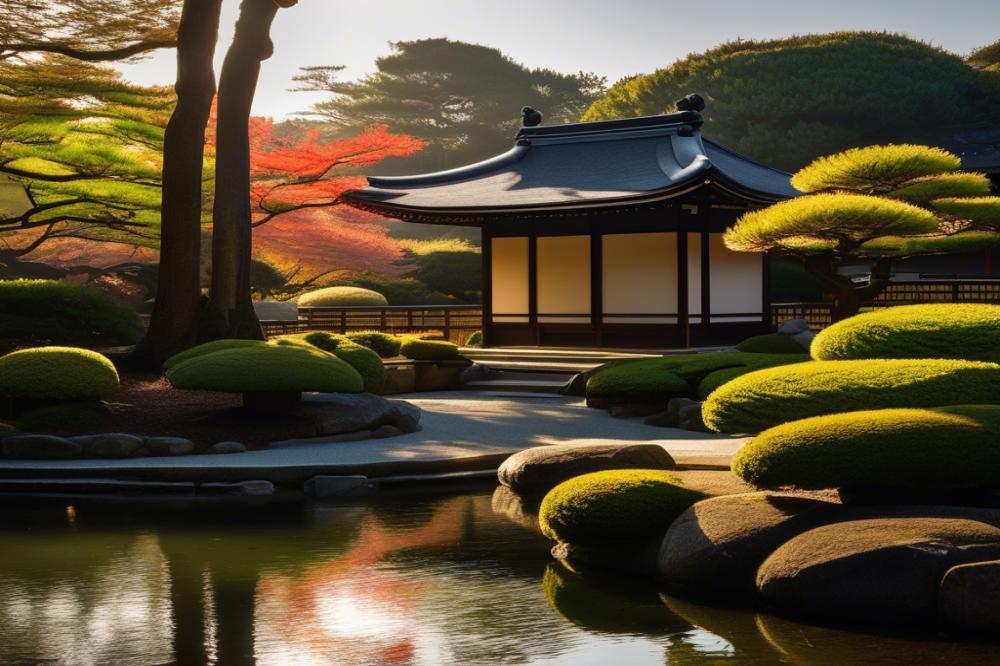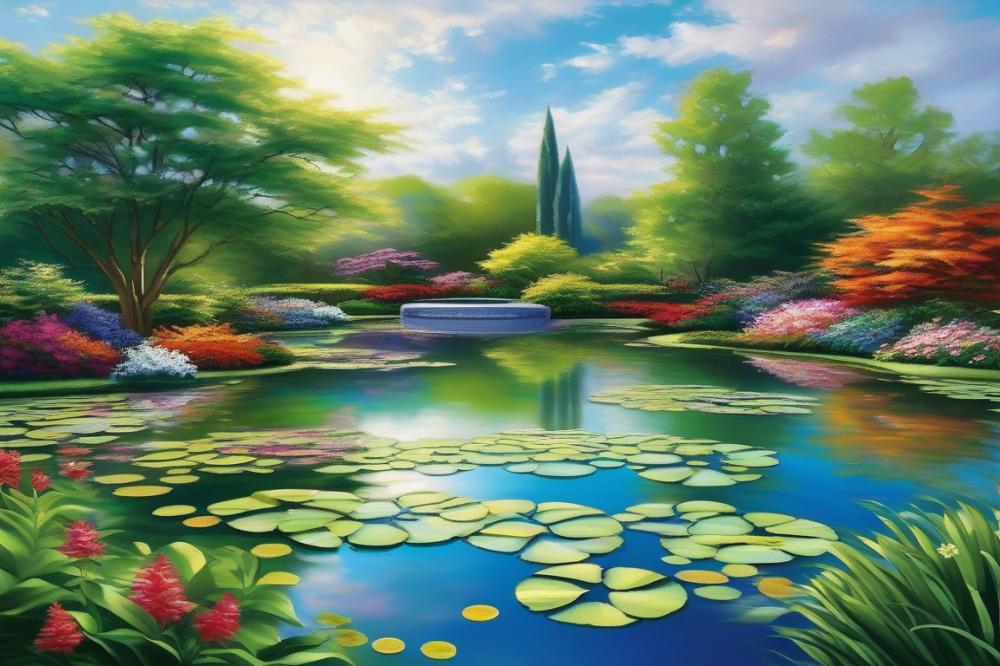The Role of light and shadow in Japanese Gardens
Japanese Gardens have a rich history and a deep cultural significance. They are a visual representation of nature, often designed to create a peaceful retreat. Natural elements such as water, rocks, and plants come together to promote tranquility. These spaces invite visitors to connect with their surroundings and, in doing so, discover a form of mindfulness.
In landscape design, the interplay of light and shadow plays a vital role. Not only does it enhance aesthetics, but it also creates visual contrast that adds depth to the garden. The changing seasons bring different qualities to light, affecting how we perceive each area. Blossoms in spring, vibrant foliage in summer, and the stark branches in winter showcase the garden’s character through changing shadows.
Harmony is a key principle in these designs. Every element, from the placement of stones to the flow of water, contributes to a serene atmosphere. This balance encourages meditation and reflection. By incorporating light and shadow, these gardens offer moments of beauty and peace. As you stroll through, you may find that the variations inspire a deeper appreciation of nature and the passage of time.
The Influence of Natural Elements
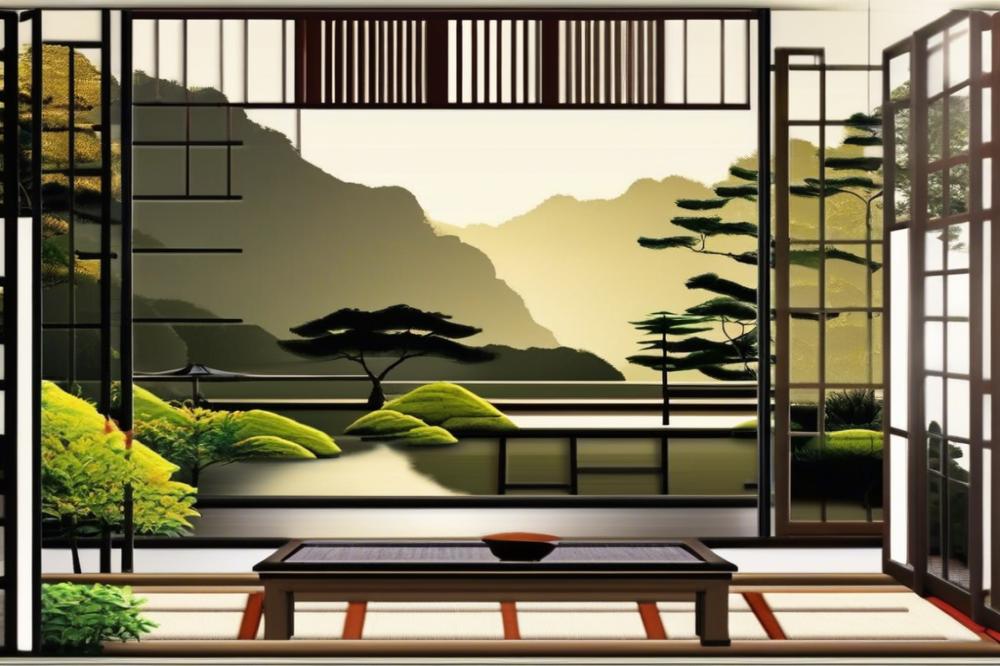

Vegetation plays a crucial role in shaping the light and shadow within a garden. Carefully selected plants create varying levels of shade, offering a sanctuary of tranquility. Different types of trees, shrubs, and flowers allow for stunning contrasts, enhancing the garden’s aesthetics. They also influence how sunlight filters through, casting beautiful patterns on the ground. This interplay between light and shadow invites visitors to pause and appreciate the world around them.
Water features greatly contribute to the overall experience. Ponds and streams reflect sunlight, adding another layer of beauty to the landscape design. This interplay of light creates a dazzling effect, encouraging mindfulness and meditation. The shimmering surface of water draws the eye and calms the mind, making it a significant element of Japanese gardens. Splashes of light dancing on the water enhance the sense of harmony within the space.
Seasonal changes further enrich the garden’s atmosphere. As flowers bloom and leaves turn, the light shifts, creating new visual contrasts. Autumn hues mingle with the golden rays of sunlight, painting a breathtaking picture. Each season reveals different aspects of natural elements, inviting deeper reflection. Visitors can observe how their surroundings morph, highlighting the passage of time and the garden’s cultural significance. This cyclical nature offers profound insights into life and nature’s delicate balance.
Aesthetics and Visual Contrast
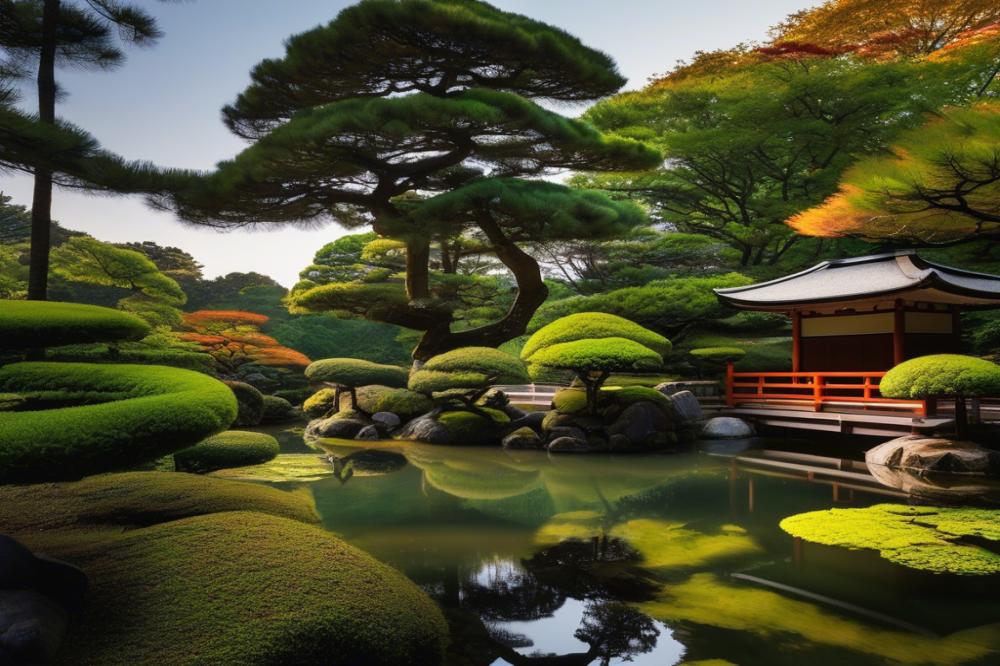

Light and shadow play a vital role in enhancing the aesthetics of gardens. These natural elements create a shifting panorama that captivates the eye. As sunlight casts its rays through the leaves, it forms intricate patterns on the ground. The contrast between bright areas and shadowed spaces adds depth to the landscape design. This interplay is not just beautiful; it invites mindfulness and meditation.
Structures within the garden manipulate light in fascinating ways. Pavilions and stone lanterns can redirect sunlight, creating moments of surprise and delight. These architectural features serve as focal points that draw attention. They can also offer shade, promoting a tranquil environment well-suited for reflection. The thoughtful placement of these elements embodies cultural significance, harmonizing nature and art.
The effect of visual contrast on composition is profound. Different hues and intensity levels create balance and interest. Seasonal changes intensify this effect, as plants shift their colors throughout the year. A blossoming cherry tree against a backdrop of lush green offers a striking image. These contrasts not only please the eye but also enrich the experience of the garden. Observers often find themselves immersed in the beauty around them, feeling a greater connection to nature.
In essence, the role of light and shadow goes beyond appearance. They foster a sense of harmony that resonates with the mind and spirit. The tranquil ambiance draws individuals to engage more deeply with their surroundings. Every visitor can experience the calming effects of such carefully curated landscapes.
Cultural Significance of Light and Shadow
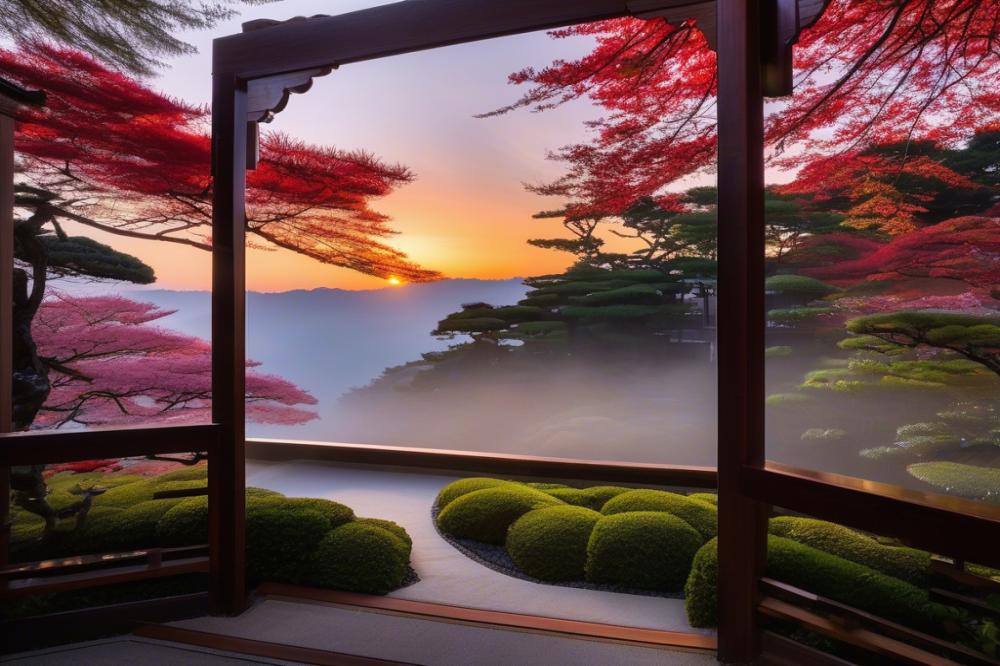

In the history of landscape design, light and shadow have always played crucial roles. Japanese garden design has evolved over centuries, deeply influenced by various cultural practices. These design elements highlight the beauty of nature while inviting reflection. The subtle interplay of light and dark creates a unique atmosphere that encourages visitors to pause and think.
Moreover, symbolism becomes apparent when considering the meanings behind light and dark in Japanese culture. Light often represents purity, vitality, and life itself, while shadows can evoke themes of mystery, contemplation, and the passage of time. This duality serves as a reminder of the balance present in life and nature. Many find deep meaning in this contrast, which mirrors the human experience with its joys and sorrows.
In addition, these concepts are closely tied to spiritual practices and mindfulness. The seasonal changes in gardens demonstrate how nature’s rhythms also reflect spiritual lessons. Areas of sunlight invite energetic feelings, promoting positivity, while shaded areas foster tranquility and introspection. Moments spent in meditation among these natural elements can enhance self-awareness and peace. This harmony in a garden setting offers a space for individuals to connect deeply with their thoughts and feelings.
Visual contrast between light and shadow may also influence a visitor’s journey through a garden. Pathways that shift between bright and dim sections evoke curiosity. They prompt individuals to explore further and engage with their surroundings. Each step taken can lead to new discoveries, reinforcing the importance of being present. Gardens become living tapestries, where every shifting ray of sunlight contributes to the overall aesthetics.
Creating Harmony through Light and Shadow
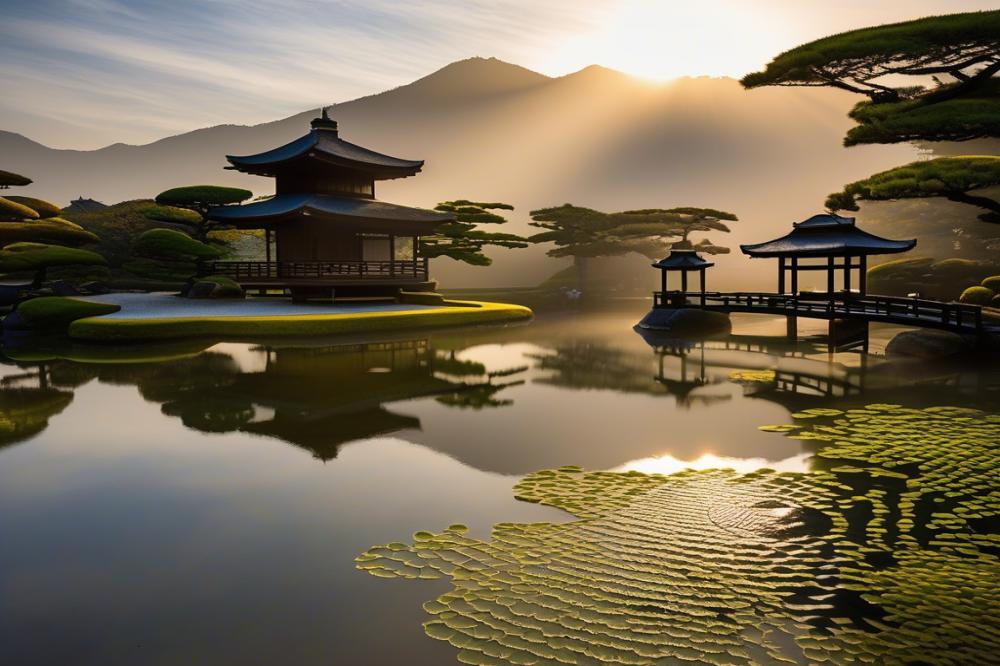

In landscape design, light and shadow work together to create a sense of balance. Strategic placement of trees and rocks allows for the interplay of these elements. As sunlight filters through leaves, it casts patterns on the ground, enhancing the garden’s beauty. Designers often consider how these elements change with the seasons. This approach not only highlights various features but also invites a deeper appreciation for natural elements.
Tranquility forms the core of this aesthetic. Meditative spaces are often created where visitors can reflect in a serene setting. Harmony between light and shadow encourages a sense of peace. Shadows can provide coolness on hot days, while sunlight warms areas, inviting exploration. Each subtle change in light can evoke different emotions, promoting mindfulness during the visit.
The cultural significance of these gardens enhances this balance. Japanese aesthetics values simplicity and depth. Visitors may notice visual contrast as light dances with shadow. Colors appear more vibrant under direct sunlight, while muted tones come alive in shaded areas. This contrast not only captivates the eye but also engages the mind, fostering a moment of contemplation.
Understanding the impact of seasonal changes enriches the experience. Each season transforms how light interacts with the environment. Spring blossoms, summer greens, autumn hues, and winter snows all play a role. Visitors who appreciate these variations are likely to feel a deeper connection to the space. That connection promotes a greater appreciation of the garden’s tranquility.
Ultimately, this delicate balance enchants everyone who walks through. Light and shadow work in tandem to create a place for meditation and reflection. Each visit brings new perspectives as one learns to see beyond the surface. The dance of illumination not only shapes aesthetics but also nourishes the soul. In essence, the harmonious blend of these elements allows for a richer and more meaningful experience.
Mindfulness and Reflection in Japanese Gardens
The interplay of light and shadow contributes significantly to the art of landscape design found in these serene spaces. Sunlight filtering through leaves creates intricate patterns on the ground, inviting visitors to pause and absorb their surroundings. This visual contrast encourages one to immerse in the moment, fostering a sense of mindfulness that many strive to achieve in their daily lives.
Calmness envelops those who walk among the natural elements, providing a perfect backdrop for reflection. Shadows stretch and shift with the passage of time, echoing the seasonal changes that define these gardens. Such transformations remind us of the impermanence of life, often leading to deeper contemplation as individuals connect with the cycle of nature.
Encouraging slow-paced reflection, every corner of a Japanese garden is designed to promote quiet thought. Each stone, bonsai tree, and flowing water embodies the harmony that exists in the world around us. Visitors often find themselves drawn to these peaceful spots, embracing moments of meditation as they appreciate the aesthetics of their environment.
Gentle breezes and rustling leaves harmonize with the gentle play of light, creating a tranquil atmosphere. In this setting, individuals are inspired to engage with their feelings, bringing clarity and focus to their thoughts. Repeated visits not only deepen understanding but also enhance one’s ability to find solace amidst life’s chaos.
In conclusion, the cultural significance of light and shadow cannot be overstated. Each visit reveals new insights and emotions, enriching the experience. Japanese gardens serve as a powerful reminder of how nature can inspire mindfulness and reflection, ultimately leading us toward tranquility.
Reflecting on Light and Shadow in Garden Design
Light and shadow hold a crucial place in the world of garden design. They bring forth a sense of tranquility that invites visitors to pause and reflect. The way sunlight dances upon surfaces creates an atmosphere that changes with the time of day. Shadows offer cool respite, providing contrast to the brightness. Both elements play a vital role in shaping the experience of those who stroll through these spaces.
Beauty in these gardens is often defined by how light interacts with natural forms. Subtle shifts can reveal hidden details in the landscape. Rock formations, trees, and water features come alive as sunlight filters through leaves. Alongside this, shadows stretch and shift, drawing the eye and encouraging exploration. This dynamic connection between light and shadow enhances the visual appeal, leading to a richer experience.
Cultural significance also lies within this delicate interplay. Historically, these gardens reflect philosophical ideas about nature and balance. Light symbolizes enlightenment, while shadow can represent mystery and depth. This duality resonates deeply with Japanese culture, emphasizing harmony with the environment. Such themes reflect a broader understanding of life, creating spaces that promote contemplation.
Ultimately, the charm of such gardens remains timeless and universal. They invite people from all walks of life to find moments of peace. The thoughtful use of light and shadow transforms ordinary landscapes into extraordinary retreats. These spaces encourage a connection with nature that feels essential in today’s world. As we admire the artistry of these gardens, the balance they strike between light and shadow continues to captivate the heart and soul.

